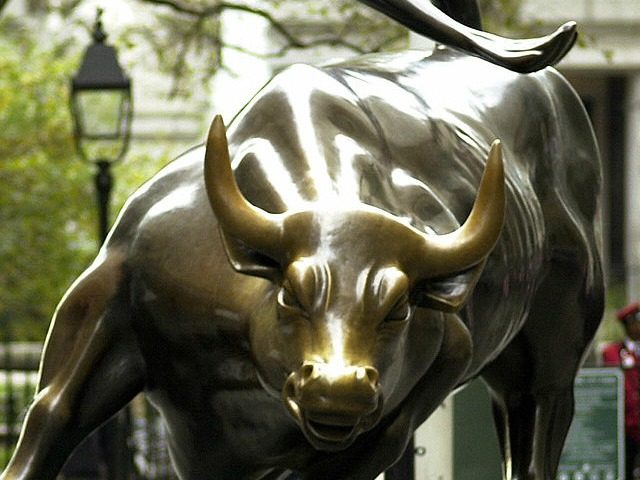U.S. stock markets charged to record highs last week, but a Goldman Sachs downgrade knocked down the so called FAAMG tech stocks that have led the Trump stock boom.
The Dow Jones Industrial Average [DJIA] rose 89.44 points, or 0.42 percent, to close at an all-time-high of 21,271.97 on June 9. The index, which includes many of America’s largest companies, is up by 7.64 percent year-to-date and up 18.27 percent in the last 12 months.
Goldman Sachs analyst Robert Bouroujerdi warned that the $600 billion outperformance by the 5 biggest tech stocks known as FAAMG — Facebook, Amazon, Apple, Microsoft and Alphabet — had contributed about 42 percent of all stock market gains over the last year. Goldman worries that the boom has created an “valuation air-pocket,” similar to the ridiculously high valuations for tech stocks during the Dot-Com boom, according to Zero Hedge.
Bouroujerdi suggested that stock traders consider that after the 500 percent gain for the tech-heavy NASDAQ index during the Dot-Com bubble, which lasted from 1995 to 2001, the Dot-Com bust that lasted until 2003 saw the NASDAQ lose 85% of its valuation.
Goldman’s pre-market-opening report on June 9 caused Facebook, Inc. [FB] to tank 3.3 percent. Amazon.com, Inc. [AMZN] dropped by 3.16 percent, Apple Inc. AAPL plunged 3.88 percent, Microsoft Corporation [MSFT] was down by 2.27 percent, and Google’s parent Alphabet [GOOG] took a 3.41 percent dive.
There have been a tremendous number of doubters in the latest bull market, which has risen by 260.5 percent since it began on March 9, 2009. During that period, there have been 12 market corrections of at least 5 percent, according to the Advisor Perspectives blog.
During that fabulous run, the U.S. total nominal net worth of households and nonprofit organizations has zoomed from $56 trillion to $96 trillion through the end of the first quarter. That works out to about $292,000 per capita.
Stock market bulls highlight the current positive momentum in the real economy. It is widely known that the U.S. unemployment rate has fallen from 10 percent inn late 2009 to 4.3 percent, the lowest level in 16 years. But the U.S. Bureau of Labor Statistics revealed June 6 that its Job Openings and Labor Turnover (JOLTS) indicator reached an all-time record of 6,044,000 million jobs available at the end of May.
Stock market bears are less optimistic. Billionaire commodity guru Jim Rogers, who correctly called the 2008 crash, told the Business Insider that the current combination of record debt and nose-bleed-high real estate and stock valuations means that the next economic crash will be “the biggest in my lifetime.”
A more balanced view of the stock market comes from Ray Dalio, the founder of Bridgewater Associates, which manages $150 billion. He wrote earlier this month: “Big picture, the near term looks good and the longer term looks scary.” He added, “[W]e fear that whatever the magnitude of the downturn that eventually comes, whenever it eventually comes, it will likely produce much greater social and political conflict than currently exists.”

COMMENTS
Please let us know if you're having issues with commenting.